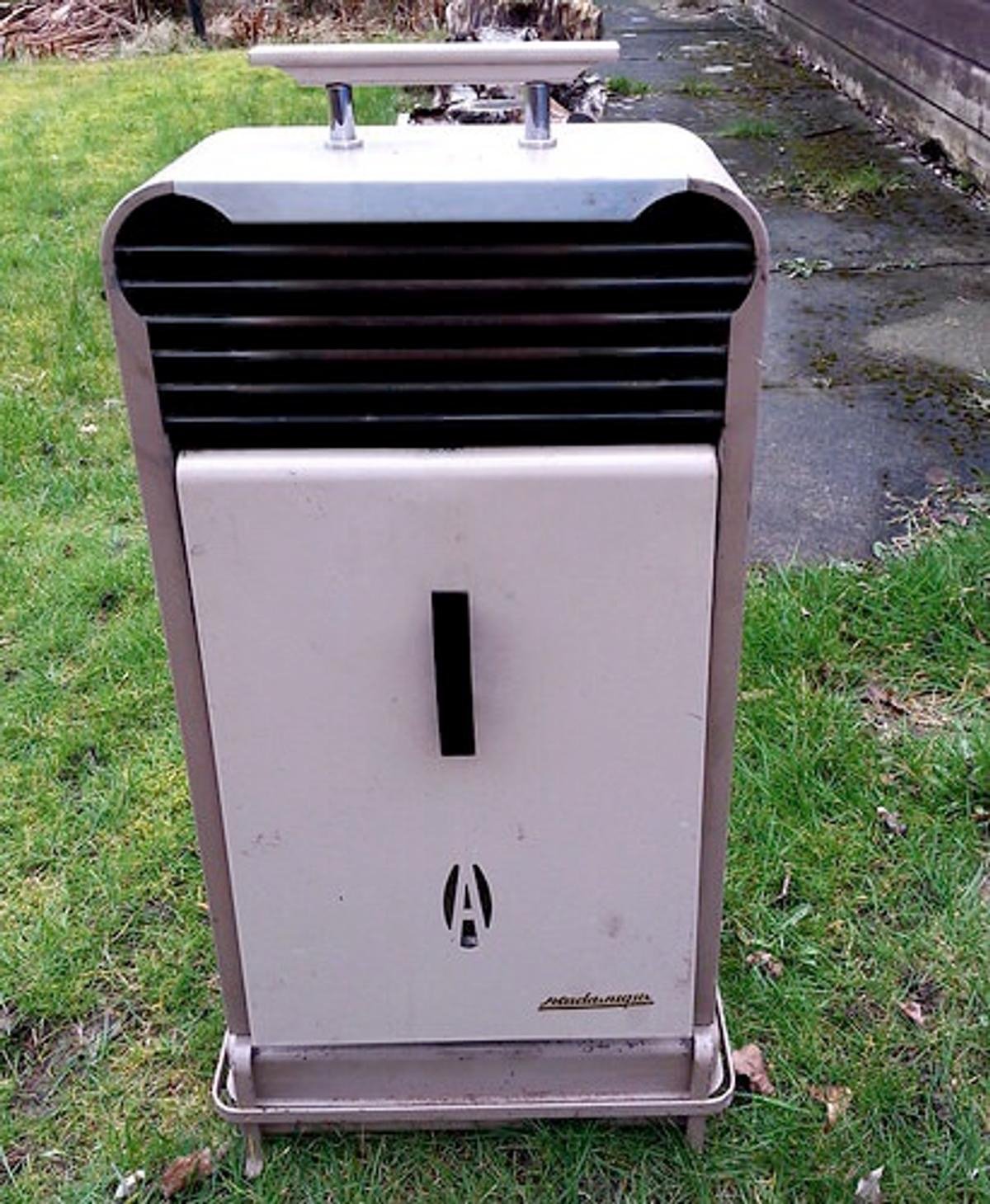We’d like to remind Forumites to please avoid political debate on the Forum.
This is to keep it a safe and useful space for MoneySaving discussions. Threads that are – or become – political in nature may be removed in line with the Forum’s rules. Thank you for your understanding.
📨 Have you signed up to the Forum's new Email Digest yet? Get a selection of trending threads sent straight to your inbox daily, weekly or monthly!
Paraffin heater
Comments
-
Section62 said:Neither are now available. And any given product now sold as 'paraffin' is not necessarily suitable for burning in an indoor heater. Not only is there a risk of fire and/or CO poisoning, some 'paraffin' blends will stink when burned, and getting rid of that smell from indoors is not easy.Yes indeed. A rose by any other name might smell as sweet, but paraffin doesn't!Picking up from exchanges we had in a different thread yesterday in relation to fuelling a different type of heater, this seems like a good example where having exactly the right type of fuel is critical, the key point being that the products of combustion are going directly into the air that you breathe, not outside via a flue or exhaust pipe. For some types of heater the manufacturers specifically state that you can use different fuel types and even recommend it in some circumstances (as is the case for the so called "diesel heaters" that we discussed yesterday) and that's fine, but as you said yesterday that doesn't mean the fuels are generally interchangeable.Having had my interest piqued, I downloaded the manual for one of the "safe to use indoors" paraffin heaters I saw online earlier and note that although it says the room needs to be adequately ventilated it doesn't tell you what that means. If you buy a gas cooker or bottled gas space heater, the manual tells you how big the room needs to be in m3 and how much ventilation is needed in cm2. Furthermore if you buy a new cooker the law requires you to have it installed by a Gas Safe engineer and part of the commissioning process involves checking that there is adequate ventilation. No such checks and balances seem to exist for this kind of heater, although interestingly they are CE approved for use as secondary heating appliances and do seem to have a number of saftey features, so it could be the quality of documentation that's the issue rather than the underlying appliance.On balance, although this kind of heater looks cost effective and may be a good solution for some in the correct environment, like many others here it's not something I'd want to risk trying.0
-
lohr500 said:
All of which are different.It's interesting how we've ended up calling it 'paraffin' when used in small heaters and lamps, 'oil' when firing a central heating system, and 'kerosene' when it is running a jet airliner
They are describing the same basic commodity though. If you go on a heating oil supplier site they will often refer to it as kerosene.I suppose in the same sense that estate/hatchback/saloon/sports/SUV = Car0 -
Dunstonh mentions Aladdin Pink to fuel the old paraffin heaters (on a side note I seem to to recall Aladdin were a big brand in supplying the actual heaters...I think it was the brand we had when I was a very young kid) but anybody remember the Esso Blue ads on TV to tune of Smoke Gets In Your Eyes...which as it happened was very true if the wick wasn't trimmed properly lol.The main thing I recall about the heaters was that, despite ventilation, they gave off a lot of moisture that condensed on the windows (single glazed of course in those days) and froze on the panes esp in the winter of 62/63. Smelly dangerous things, particularly if knocked over, hopefully if there are modern equivalents they have improved the safety aspect at least.2
-
When I was young, we had one of these paraffin heaters in the house and used it during cold spells. We would come in from the snow and warm our hands over it.

6.4kWp (16 * 400Wp REC Alpha) facing ESE + 5kW Huawei inverter + 10kWh Huawei battery. Buckinghamshire.2 -
We had a Valor 12c in the kitchen in the 1960s.Out of interest I googled "paraffin heater uk", and they look like something out of the 1950s!Zibro make ones like the Japanese use, fan assisted, electronic ignition, fall over & earthquake sensors. The Japanese ones have a timer that plays a tune every hour/half hour and if you don't reset it (because you are asleep or overcome with carbon monoxide poisoning) it switches off.5kW output, no wonder they warm a room up quickly.I want to go back to The Olden Days, when every single thing that I can think of was better.....
(except air quality and Medical Science )0
)0 -
Every litre of paraffin burned releases a litre of water vapour. If a house is cold and damp to start with, it will only make matters worse.0
-
The previous owners of our bungalow used LPG heaters instead of the electric storage heaters and there was mould and condensation everywhere which had to be cleaned out and sterilised. I suspect that a paraffin heater would be very similar, with the added risk of spilled fuel and smell.
When I were a lad in the 50's paraffin was easily available, in fact a paraffin lorry would come down our road every now and again, and people would take their cans out to be refilled but it was smelly and messy . I guess nowadys, unless you can get it delivered you'd have to take your cans to depot to get them filled, using your car or public transport.
We had a paraffin heater in the toilet, to prevent the pipes freezing and another that got moved from room to room as required but there was always that all pervading odour and lots of condensation which would run down the windows.
I'm sure breathing in the fumes didn't do us a lot of good either, but as we had coal fires and smog around in the winter and nearly everyone smoked wherever you went, it probably didn't make a lot of difference.healthwise
TBH the only place I'd use a paraffin heater would be in a greenhouse where the heat, condensation and CO2 would be beneficial to the plants.
Never under estimate the power of stupid people in large numbers2 -
Lots of people used them when we only had one coal fire in the main room.alanwsg said:Strange reading these posts - when I was a kid, we always used paraffin heaters indoors, notably on bath night to warm up the bathroom.
Never bothered about any ventilation or anything, but we were lectured about adjusting the wick to ensure a "safe blue flame", not a dangerous yellow one!
The Esso Blue man came round every week in a van supplying it by the gallon with his knock and call of "Esso Blue "They advertised on the TV alongside Pepsodent and John Blooms ( the washing machine entrepreneur ) "Flatly " clothes dryer with the catch phrase "Mum deserves a Flatley "
It was my job as a kid to light it and adjust it to the blue flame but it did smell quite strongly.Ventilation ? not in the late 1950 s and early 1960 s .Health and Safety had not been invented.1 -
which brings us back to my idea
a BLOW air heater on diesel working outside, blowing hot air through an airvent (like wot i have) built into a weather proof ventilated housing
although our big bills have been leccy not gas TBH0 -
Bet your neighbours would love you with a diesel engine running constantly outside lolmaxmycardagain said:which brings us back to my idea
a BLOW air heater on diesel working outside, blowing hot air through an airvent (like wot i have) built into a weather proof ventilated housing
although our big bills have been leccy not gas TBH1
Confirm your email address to Create Threads and Reply

Categories
- All Categories
- 352.9K Banking & Borrowing
- 253.9K Reduce Debt & Boost Income
- 454.7K Spending & Discounts
- 246K Work, Benefits & Business
- 602.1K Mortgages, Homes & Bills
- 177.8K Life & Family
- 259.9K Travel & Transport
- 1.5M Hobbies & Leisure
- 16K Discuss & Feedback
- 37.7K Read-Only Boards







